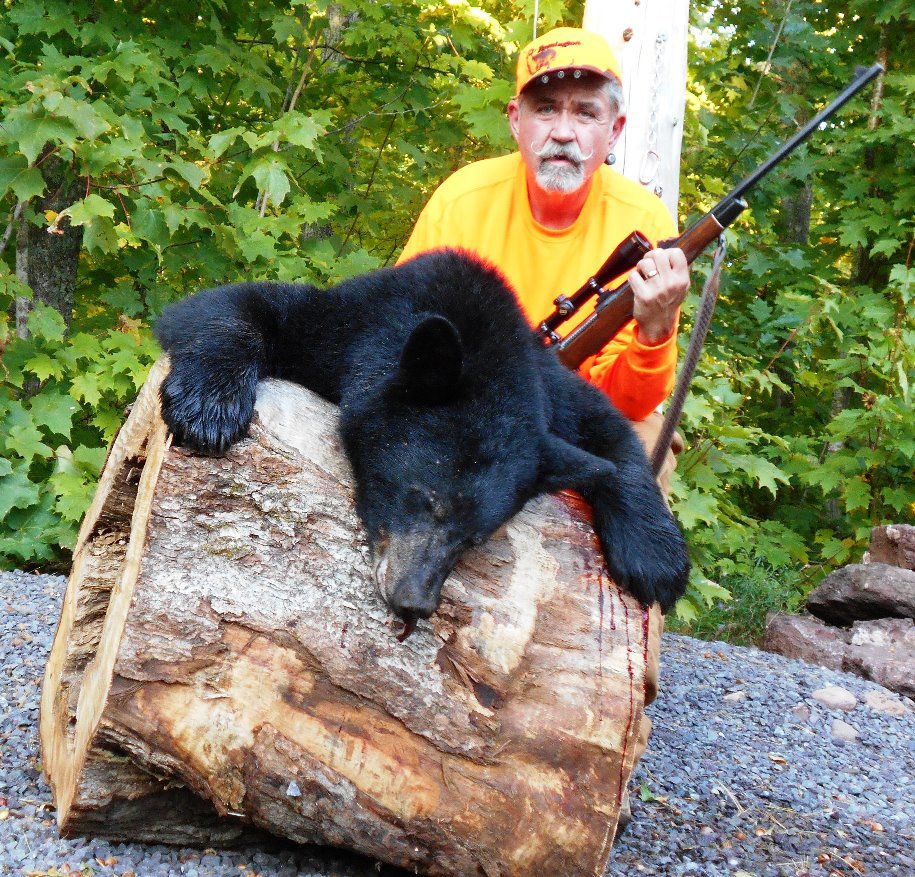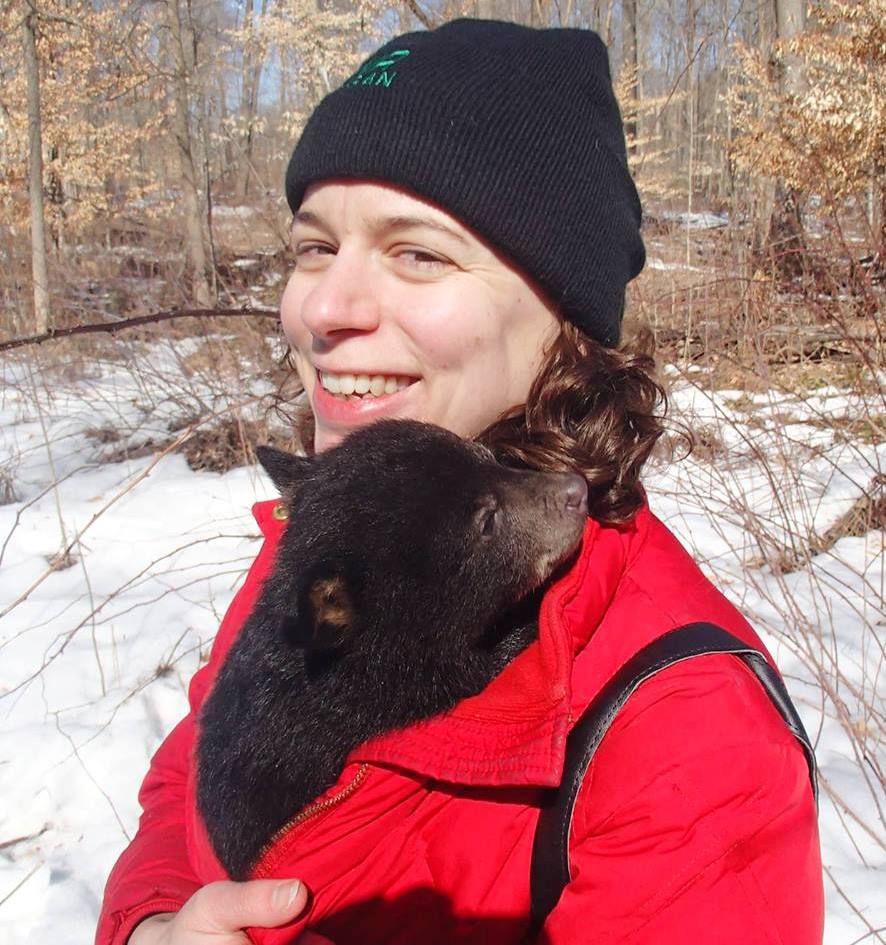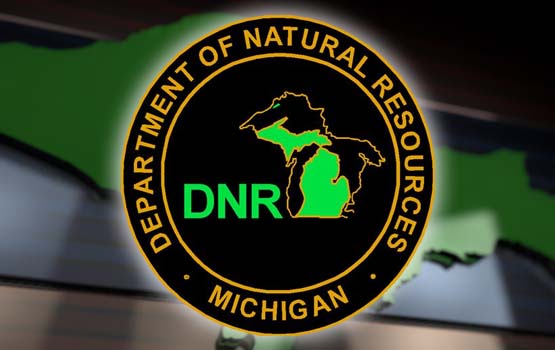The Michigan Department of Natural Resources is calling the recent bear harvest successful.
Bears are managed by the DNR to maintain populations, provide recreational opportunities, including hunting and viewing, and help reduce the potential for problems with bears.
The DNR says black bear hunting is a priority component of scientific management that balances bear biology with the desires of the public.
Most of Michigan’s bears live in the Upper Peninsula.
This past fall, bear hunters took to the woods on Drummond Island and within six bear management units in the U.P. and three units in the northern half of the Lower Peninsula.
DNR biologists said preliminary results showed a 12-percent increase in the 2015 statewide bear harvest over 2014.
Here is the full DNR Press Release:
Hunter success rate increases as DNR biologists continue to track Michigan’s black bear population
For the past 90 years, black bear hunting has been part of the bear management program in Michigan.
Bears are managed by the Michigan Department of Natural Resources to maintain populations, provide recreational opportunities, including hunting and viewing, and help reduce the potential for problems with bears.
The strategic goals of the DNR’s Black Bear Management Plan recognize hunting as a priority component of scientific management that balances bear biology with the desires of the public.
This past fall, bear hunters took to the woods on Drummond Island and within six bear management units in the Upper Peninsula and three units in the northern half of the Lower Peninsula.
Bear harvest
DNR biologists said preliminary results showed a 12-percent increase in the 2015 statewide bear harvest over 2014.
 “Hunter success rates continue to increase in many bear management units throughout Michigan,” said Kevin Swanson, a wildlife management specialist with the DNR’s bear and wolf program. “This is one indication of good bear numbers.”
“Hunter success rates continue to increase in many bear management units throughout Michigan,” said Kevin Swanson, a wildlife management specialist with the DNR’s bear and wolf program. “This is one indication of good bear numbers.”
Swanson said in general, most bear hunters want Michigan to have more bears.
“The harvest in Michigan of 1,647 bears in 2015 remains approximately 30 percent below the peak harvest of 2006,” Swanson said.
Since 1990, the peak harvest in the U.P. occurred in 2006 at more than 2,000 bears, while the northern Lower Peninsula high harvest was in 2008 at over 500 bears.
Population statistics
Bear populations throughout Michigan currently are stable or are increasing, depending on region. Bears are found across roughly 35,000 square miles of suitable habitat, mostly in the northern two-thirds of the state. Most of Michigan’s bears live in the U.P.
According to the DNR’s Statistical Catch-At-Age (SCAA) analysis – which uses bear sex and age data since 1992 – bear abundance in Michigan was most recently estimated at a total of 10,754 sub-adult and adult bears, with 8,721 in the U.P. and 2,033 in the northern Lower Peninsula. Those figures represent bear pre-harvest in 2014.
While the analysis estimates the bear population in the Upper Peninsula has dropped about 9 percent since 2000, in the northern Lower Peninsula, bear numbers have risen an estimated 64 percent over the past 15 years.
Phillip Barry of Hancock is a bear hunter who said he thinks the bear population is rising based on the 2015 license allotments and his personal observations.
“This year, for the first time in several years, I recorded several sows with cubs,” Barry said. “The 1 ½-year-old (age) class appears to be increasing also. In fact, I passed on two 160- to 175-pound bears to let them grow.”
State bear managers have worked to balance requests from the public for more bears with local bear population densities and numbers of bear nuisance complaints.
densities and numbers of bear nuisance complaints.
“Due to previous concerns expressed by DNR biologists and a wide array of hunters and bear hunting clubs, license quotas and the associated bear harvest were decreased significantly beginning in 2012,” Swanson said. “The current DNR goal is to increase bear numbers as justified by habitat capabilities. We will then begin to stabilize the population by increasing the harvest after population growth is evident.”
Regulated hunting helps keep bear populations at acceptable levels. DNR officials staying connected with stakeholders and constituents, and setting license quotas based on appropriate population goals, will help manage a healthy bear population.
Bear hunting seasons open across Michigan in September and, depending on bear management unit, largely continue into October. Some days of the hunt are restricted to bait-only hunting, while bait and dogs may be used during the remaining days of the seasons.
Non-resident licenses in Michigan are capped at 2 percent. In 2015, 125 out-of-state residents were granted bear hunting licenses from the nearly 7,000 issued.
Bear nuisance complaints in the U.P. tallied a bit over 100 for 2015, down from the peak of nearly 250 in 2004. In the northern Lower Peninsula, bear complaints were over 120 in 2014, but had slipped to more closely align with the U.P. in 2015. In 2003, complaints peaked in the northern Lower Peninsula at more than 160.
Numerous factors affect bear complaints including available food sources and public attitudes toward bears over time as population numbers increase.
Study methods
In 2014, the DNR began using the statistical catch-at-age analysis among its measures to estimate bear population levels in Michigan.
“Few states have committed to the collection of such detailed harvest data as Michigan,” said Sarah Mayhew, a DNR wildlife research biologist who developed the statistical analysis. “The mandatory registration and tooth collection of harvested bears and the annual harvest mail surveys have given us datasets filled with information about the state’s bear populations that we have, until now, not taken full advantage of.”
 The statistical analysis uses the datasets to estimate the size of Michigan’s bear populations, along with mortality rates and the number of recruits, which are new yearlings added to the population each year.
The statistical analysis uses the datasets to estimate the size of Michigan’s bear populations, along with mortality rates and the number of recruits, which are new yearlings added to the population each year.
Since 1989, DNR bear researchers have been using tetracycline bear bait surveys in the U.P. Hair snare surveys were first conducted in 2003 in the northern Lower Peninsula. Prior to that, there was no estimate of the bear population in that region.
“They are both mark-recapture surveys wherein we ‘mark’ a subset of the population, ‘recapture’ those marks in the harvest and then calculate an estimate of the population based on the number of bears marked and the number recaptured,” Mayhew said.
She said both surveys are extremely labor intensive and provide only an occasional estimate of the total bear population.
“To generate annual estimates, we used to use the mark-recapture estimates as a starting point and projected forward based on assumptions of bear reproduction, survival, and harvest,” Mayhew said. “The SCAA models allow us to now generate an annual estimate of the bear population broken down by a number of different sex and age classes.”
Biologists can also use the harvest data and models to estimate a variety of other demographic parameters such as bear reproduction and survival.
“We now use the mark-recapture estimates to scale the results of the SCAA model, not as stand-alone population estimates,” Mayhew said.
Development of the SCAA analysis began in 2012 and was first used to help inform bear management during discussions of the 2015-2016 harvest management recommendations.
“Prior to that we generated population estimates through a combination of the mark-recapture population estimates – every two years in the U.P. and every four to five years in the northern Lower Peninsula – and a completely different population model known as the ‘accounting-style’ model,” Mayhew said.
Biologists will update the SCAA model in March or April when the ages of the recently harvested bears become available.
“At that point we will have an estimate of the pre-harvest 2015 population and we will be able to start projecting forward from there to future years based on various proposed harvest scenarios,” Mayhew said.
Bear hunter surveys
Each spring, the DNR issues results of its bear hunter mail surveys. The 2014 Michigan Black Bear Hunter Survey provides the most recent survey statistics on bear hunters and their methods:
- Eighty-five percent of hunters relied primarily on bait alone.
- About 11 percent relied primarily on dogs alone or a combination of baiting and dogs.
- Eighty-two percent of bears harvested were taken over bait.
- Baiting hunters had a 28-percent success rate, while hunters using dogs had a 37-percent success rate.
- The success rate for hunters who used a guide was 43 percent.
- About 12 percent of Michigan’s 662 hunters hired a guide, which accounted for about 19 percent of the statewide bear harvest.
- Across Michigan, 78 percent of successful applicants purchased a bear hunting license.
U.P. Bear Forum
In December, about 70 participants gathered in Mackinac County for a Bear Forum meeting. The session was designed to engage DNR staff and a wide variety of groups and non-affiliated stakeholders who have an interest in bear management.
Potential regulatory topics were discussed for the upcoming 2017-18 regulation cycle. Forum attendees also reviewed the preliminary harvest results and other statistics.
the preliminary harvest results and other statistics.
Several attendees polled at the session said they’d seen more bears since regulation changes made in 2012. Others said black bear numbers were rebounding, but the population still needs to grow.
Barry attended the forum for the first time.
“l was impressed with how the DNR will be blending stakeholder experience and knowledge with scientific data to formulate regulation recommendations,” Barry said.
Forum participants also discussed theobromine or chocolate poisoning, which occurred in Michigan in a bear cub in 2010 and raccoons in 2002 and 2005. No other instances have been reported dating back more than 80 years.
A notice warning hunters of the potential harm caused by chocolate will appear in the DNR’s 2016 bear hunting digest.
“The DNR will continue to monitor reports of dead animals at bait sites and a question will be added to the bear hunter surveys we distribute, asking hunters whether they use any chocolate or cocoa derivative as bait,” Swanson said.
With the recent increase in bear hunter success rates, enhanced statistical analysis and valuable input gained from hunters and others, the DNR will continue to monitor Michigan bear populations, balancing what the public desires with what’s beneficial for bears.
For more information on bear hunting, visit the DNR’s webpage atwww.michigan.gov/bear.
 Keweenaw Report Your Source for Local News and Sports
Keweenaw Report Your Source for Local News and Sports





